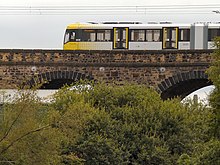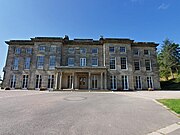Greater Manchester
Since deindustrialisation in the mid-20th century the county has emerged as a major centre for services, media and digital industries, and is renowned for guitar and dance music and its football teams.There is evidence of Iron Age habitation, particularly at Mellor,[7] and a known Celtic Britons settlement named Chochion, believed to have been an area of Wigan settled by the Brigantes.[18] This population increase resulted in the "vigorous concentric growth" of a conurbation between Manchester and an arc of surrounding mill towns, formed from a steady accretion of houses, factories and transport infrastructure.[19] Places such as Bury, Oldham and Bolton played a central economic role nationally, and by the end of the 19th century had become some of the most important and productive cotton-producing towns in the world.[34] Seven years earlier, a survey prepared for the British Association intended to define the "South-East Lancashire conurbation" noted that "Greater Manchester it is not ... One of its main characteristics is the marked individuality of its towns, ... all of which have an industrial and commercial history of more than local significance".Bury and Rochdale were originally planned to form a single district (dubbed "Botchdale" by local MP Michael Fidler)[38][39] but were divided into separate boroughs.[42] By the early 1970s, this system of demarcation was described as "archaic" and "grossly inadequate to keep pace both with the impact of motor travel, and with the huge increases in local government responsibilities".[52] The highest priority was to increase the quality of life for its inhabitants by improving the county's physical environment and cultural facilities which had suffered following deindustrialisation – much of Greater Manchester's basic infrastructure dated from its 19th-century growth, and was unsuited to modern lifestyles.[55] In this capacity, GMCC found itself "planning for an arbitrary metropolitan area ... abruptly truncated to the south", and so had to negotiate several land-use, transport and housing projects with its neighbouring county councils.Government policy on the issue was considered throughout 1982, and the Conservative Party put a "promise to scrap the metropolitan county councils" and the GLC, in their manifesto for the 1983 general election.[75] Following a bid from AGMA highlighting the potential benefits in combatting the financial crisis of 2007–2008, it was announced in the 2009 United Kingdom Budget that Greater Manchester and the Leeds City Region would be awarded Statutory City Region Pilot status, allowing (if they desired) for their constituent district councils to pool resources and become statutory Combined Authorities with powers comparable to the Greater London Authority.[77] The Local Democracy, Economic Development and Construction Act 2009 enabled the creation of a Combined Authority for Greater Manchester with devolved powers on public transport, skills, housing, regeneration, waste management, carbon neutrality and planning permission, pending approval from the ten councils.[76] On 3 November 2014, George Osborne, the Chancellor of the Exchequer, announced that there would be an eleventh member of the GMCA – a directly elected Mayor of Greater Manchester, with "powers over transport, housing, planning and policing" from 2017.[13] Black Chew Head is the highest point in Greater Manchester which forms part of the Peak District National Park, rising 1,778 ft (542 m) above sea-level, within the parish of Saddleworth.[85] Greater Manchester is characterised by its dense urban and industrial developments, which include centres of commerce, finance, retail and administration, as well as commuter suburbs and housing, interspersed with transport infrastructure such as light rail, roads and motorway, and canals.[95] Outside the boundary of Greater Manchester it includes several adjacent areas of settlement and a few outliers connected to the conurbation by ribbon development, such as Wilmslow and Alderley Edge in Cheshire, Glossop and Hadfield in Derbyshire, and Whitworth in Lancashire.[115] For instance, the wooded valleys of Bolton, Bury and Stockport, the moorlands north and east of Rochdale, Oldham and Stalybridge, and the reed beds between Wigan and Leigh, harbour flora and fauna of national importance.[115] Mature woodland, scrubland, grassland, high moorland, mossland, agricultural land, lakes, wetlands, river valleys, embankments, urban parks and suburban gardens are habitats found in Greater Manchester which further contribute to biodiversity.Common cottongrass (Eriophorum angustifolium), a plant with fluffy white plumes native to wet hollows on high moors, was announced as the county flower of Greater Manchester.[125][126][127] The house sparrow, starling, and blackbird are among the most populous bird species in Greater Manchester; magpie and feral pigeon are common and breed in habitats across the county.While a majority of the county north of the River Mersey to as far as Chorley, Darwen, St Helens and Rossendale form a large part of the historic county of Lancashire including Manchester, Salford, Eccles, Bolton, Bury, Prestwich, Swinton, Pendlebury, Wigan, Leigh, Rochdale, Oldham, Ashton-under-Lyne, Stretford, Urmston, Old Trafford, Chadderton, Middleton, Heywood, Radcliffe, Milnrow, Horwich, Blackrod, Westhoughton, Littleborough, Atherton, Ashton-in-Makerfield and Golborne.[137] There was a proposal for Horwich, Atherton, Blackrod and Westhoughton to form either a new part of Greater Manchester or become a separate area back within Lancashire possibly under the Borough of Chorley although this was not pursued.[171][172] Vast areas of low-quality squalid terraced housing that were built throughout the Victorian era were found to be in a poor state of repair and unsuited to modern needs; many inner-city districts suffered from chronic social deprivation and high levels of unemployment.[191] Historically, the docks at Salford Quays were an industrial port, though are now (following a period of disuse) a commercial and residential area which includes the Imperial War Museum North and The Lowry theatre and exhibition centre.Thirteen schemes have been allocated £23.7m in total, including a new active travel corridor along Chapel Street in Salford and a cycling and walking 'helix ramp' as part of Stockport Interchange.[222] Cambridge Policy Consultants estimate 4,500 full-time jobs as a direct consequence, and Grattan points to other long-term benefits accruing from publicity and the improvement of the area's image.[252] In 2014, Will Straw remarked that "Greater Manchester is a creative powerhouse", recognised for its cultural output in areas such as association football, media and digital content, and guitar and dance music.[253] Sweet dishes include Eccles cake – native to Eccles – a small round flaky pastry cake filled with currants, sugar and spice; Manchester tart, a baked tart which consists of a shortcrust pastry shell spread with raspberry jam, covered with a custard filling and topped with flakes of coconut; and Uncle Joe's Mint Balls, traditional sweet mild mints manufactured in Wigan since their inception in 1898.[282] MediaCityUK, a host venue of the Greater Manchester Film Festival,[283] is a 200-acre (81 ha) mixed-use property development site at Salford Quays; its principal tenants are mass media organisations such as ITV Granada and the BBC.[313] A £200 million flexible, large-scale cultural, arts, and exhibition space named Factory International was opened in 2023 on the former site of Granada Studios in central Manchester.







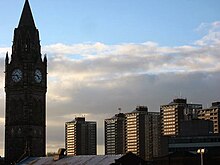
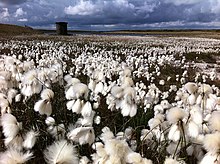
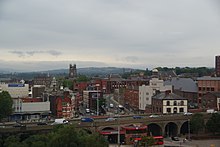

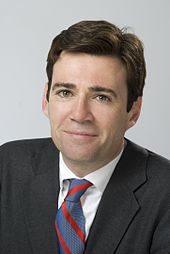

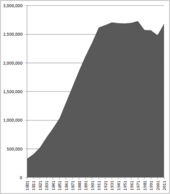

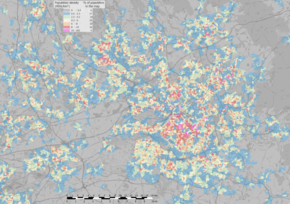
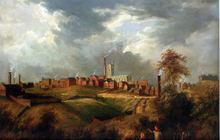
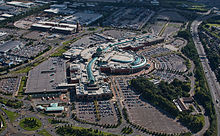
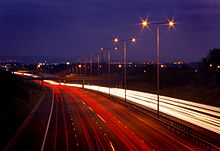
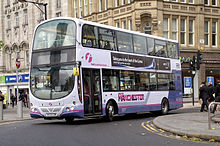

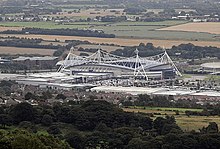
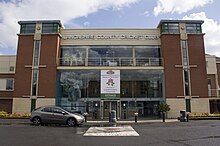
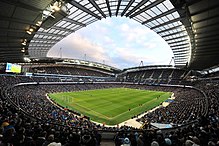

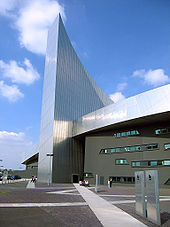

Greater Manchester Built-up AreaMetropolitanceremonial countyDeansgate SquarePeel MonumentSovereign stateUnited KingdomConstituent countryEnglandRegionNorth West EnglandLocal Government Act 1972Time zone27 MPsGreater Manchester PoliceCeremonial countyLord LieutenantHigh Sheriff39th of 483rd of 482021 censusMetropolitan countyGreater Manchester Combined AuthorityAndy BurnhamGSS codeMetropolitan districtsDistrictsManchesterStockportTamesideOldhamRochdaleBoltonSalfordTraffordLancashireDerbyshireWest YorkshireCheshireMerseysidesecond most populous urban area in the UKAltrinchammetropolitan boroughsWest Riding of YorkshireWest Lancashire Coastal PlainCheshire PlainPenninesWest Pennine MoorsSouth PenninesPeak DistrictMerseyIrwellManchester Ship CanalIndustrial Revolutionmanufacture of cotton textilesLancashire coalfieldfirst inter-city railwayErnest Rutherfordnuclear fissiondeindustrialisationfootballHistory of ManchesterIron AgeMellorCeltic BritonsChochionBrigantesStretfordCornoviiRiver MerseyCastlefieldCastleshaw Roman FortSaddleworthRoman occupationSalford Hundredancient county boundariesRiver RibbleDomesday BookSalfordshirewapentaketownshipsMossleyYorkshireweavers' cottagesWardledomestictextile manufacture during the Industrial Revolutionindustrialisationcottonflannelfustianproduce cotton goods on an industrial scalemill townsurban sprawlCounty of LondonSir Patrick GeddesManchester Evening Chroniclepublic servicesSecond World WarLancashire County Councilridingscensus in the UKRedcliffe-Maud ReportLocal Government Act 1958Local Government Commission for Englandrural districtsmetropolitan areaRossendaleMacclesfieldWarringtonAlderley EdgeNorthwichMiddlewichWilmslowNew MillsWhaley BridgeGlossopChapel-en-le-FrithBuxtonBritish AssociationTransport Act 1968SELNEC Passenger Transport Executive1970 general electioncounty councilsCheshire County CouncilMetropolitan Borough of Bury
